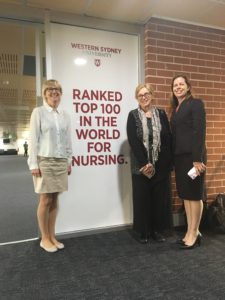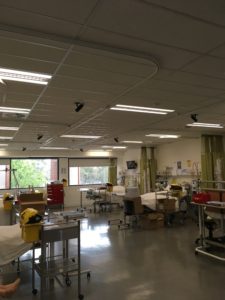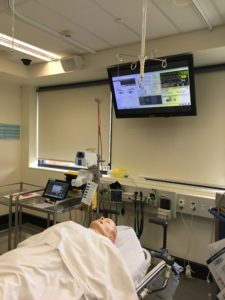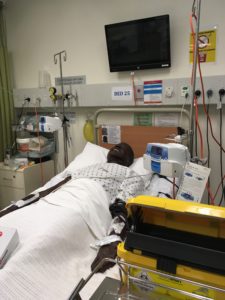I was invited by Dr. Stacey Blythe to present the NurSusTOOLKIT at the University of Western Sydney, School of Nursing and Midwifery. Janet Roden accompanied me there and we set off together in her car.
 The presentation took place at Campbelltown Campus, which is roughly a one hour drive from central Sydney. The School of Nursing has approximately 6000 students!
The presentation took place at Campbelltown Campus, which is roughly a one hour drive from central Sydney. The School of Nursing has approximately 6000 students!
I presented our NurSusTOOLKIT via Zoom Conferencing, so that those interested in the TOOLKIT but working at other campuses could still take part. Afterwards, we had a short discussion on nursing, sustainability and limited resources and also on the implications of climate change on health. We briefly discussed the use of the TOOLKIT with the head of curriculum development, Stephen McNally.
I was then invited to visit the nursing labs. On the way there we discussed the Bachelor degree programme at the university and the sheer logistics of coordinating not only the theoretical part of the programme but also the practical placements for 6000 nursing students. During their placements the student nurses are supernumerary with a mentoring ratio of 1:8. Therefore, one of the difficulties of having so many students is finding placements where the students can be mentored and also get all the opportunities the placement has to offer. Student nurses must complete a total of 800 hours of nursing practice. I was informed there is no evidence for the students having 800 hours of clinical practice, but that it was pragmatism, due to the vast number of students in training.
 The student nurses gain their skills prior to observing/working in practice in the clinical skills labs. The labs are set up for teaching and practice by technicians and the set up is in accordance with the students’ year of study. In the labs, a lecturer who is often a nurse in practice supervises the students. First year students begin by learning different basic skills, which become more complex and require increased critical and analytical skills as the students progress through second and third year. The bed space is set up exactly as it would be found on the ward. Between the labs are storerooms, which are also a replica of what the students will find in practice. To minimise waste, all the equipment, tubing, syringes etc. are recycled after the teaching session.
The student nurses gain their skills prior to observing/working in practice in the clinical skills labs. The labs are set up for teaching and practice by technicians and the set up is in accordance with the students’ year of study. In the labs, a lecturer who is often a nurse in practice supervises the students. First year students begin by learning different basic skills, which become more complex and require increased critical and analytical skills as the students progress through second and third year. The bed space is set up exactly as it would be found on the ward. Between the labs are storerooms, which are also a replica of what the students will find in practice. To minimise waste, all the equipment, tubing, syringes etc. are recycled after the teaching session.
Each bed space has a camera mounted to the ceiling and a monitor so demonstrations can be filmed and the student can see exactly what is happening. A mannequin occupies each bed and these mannequins also become more complex as the students progress through their training.
Toward the end of the programme, highly complex scenarios are coordinated and simulated by a technician who follows protocols from behind a one-way window. The technician can, for example, raise or lower blood pressure, blood sugar, respirations, heart rate, etc. and the student nurses have to react as required.
Thanks again to Stacey and the other lecturers I met at Western Sydney, it was very interesting indeed!

